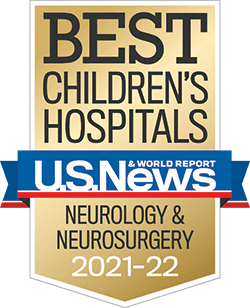How is Dystonia Diagnosed?
Diagnosing dystonia in children can be difficult, as there is no specific diagnostic test. Dystonia can be diagnosed by a neurologist through various tests. The neurologist will need to examine the symptoms and the nature of the abnormal movements or muscle contractions. Using patient and family history, they can work to rule out other conditions. Some diagnostic tools to identify dystonia include:
Common Dystonia Misdiagnoses
Dystonia is an uncommon condition, and its symptoms can be similar to those of other disorders, making it easy to misdiagnose. Common misdiagnoses may include tremors, tics, orthopaedic conditions, muscle spasms or seizures.
How is Dystonia Treated?
Various treatment methods will be determined based on the severity of symptoms, the type of dystonia and the cause. These can vary from patient to patient and may include the following:
Rehabilitation Services
Physical therapy helps increase a child’s movement and function by improving their motor development and strength.
Occupational therapy helps to improve important skills for daily life like eating, getting dressed, etc.
Speech therapy works on improving a variety of dystonia symptoms, like speech, memory and voice. Children with dystonia often struggle with these, depending on the region the dystonia is in.
Dystonia Medication
The severity of dystonia can be minimized with medication. Some medication options are ones that affect the levels of dopamine, such as carbidopa-levodopa, or ones that suppress abnormal nerve signals, like baclofen.
Botox
A botulinum toxin like Botox can be injected into the affected muscles to help relax them and lessen the involuntary contractions.
Deep Brain Simulation
Deep Brain Stimulation (DBS) is a surgical treatment for uncontrolled movements. DBS involves electrodes placed in the brain that connect to a stimulator device placed in the chest. The device sends electrical stimulation to the electrodes that can limit dystonic movement and posture. There are two types of DBS surgeries: a two-stage and a three-stage.
In the two-stage surgery, during the first stage the patient is awakened briefly in surgery to allow the doctors to determine which areas control the involuntary movements and where in the brain to place the electrodes. In the second stage, a stimulator (similar to a pacemaker) is then placed in the chest and connected to the electrodes.
In the three-stage surgery, pioneered by CHOC neurologist and Chief Scientific Officer
Dr. Terence Sanger, the child does not need to be awakened in the operating room. The first stage involves placement of 8-12 temporary depth electrodes in the brain. After surgery, stimulation can be tested in each area during a brief inpatient stay. This can identify the specific areas of the brain DBS will be most helpful in treating each child’s individual dystonia and allows for more precise electrode placement. After testing, the temporary electrodes are removed. About 2 weeks later, permanent electrodes are placed in the optimal area(s) (second surgery), followed by placement of the stimulator in the chest (third surgery).
DBS is recommended early on for treatment of certain types of dystonia caused by genetic mutations, though not all genetic dystonia responds to DBS. Patients who have secondary dystonia typically trial medication first, then move to DBS treatment if needed.
Though DBS requires surgery, this treatment can benefit children whose dystonia has not responded to other treatments.
Alternative Health Treatments for Dystonia
Children with dystonia can often benefit from activities that help build strength and coordination, such as yoga, pilates, karate and dance. These and massage can also help with maintaining range of motion and preventing development of contractures from prolonged dystonia. If spasms are painful, acupuncture and heat/cold therapy can be beneficial.
Emotional Support for Children with Dystonia
Children with dystonia can struggle with depression and anxiety due to the frustration and pain associated with dystonia.
Pediatric mental healthcare can help families work through these issues and establish coping mechanisms for a better outlook on diagnosis, treatment and life. Families may also benefit from finding
online or
in-person support groups through local or national dystonia organizations.













